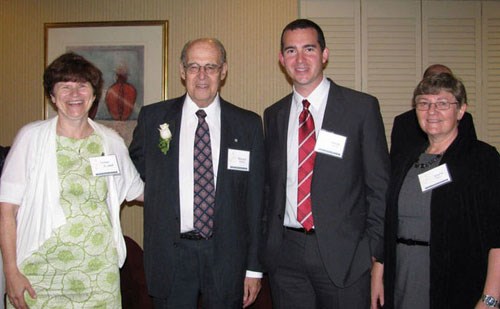Local manual therapist Diane Jacobs recently moved back to Saskatchewan, leaving a successful physiotherapy practice in Vancouver, because she missed the "land of the living skies" and wanted to continue to develop a therapy technique she created. The technique, called Dermoneuromodulation, is sending this small town farm girl all over the world to teach.
Jacobs is currently preparing to hold a webinar about her technique for members of Continuing Professional Development for Health Professionals in New Zealand. Although she will not have to leave the comfort of her home to do this online teaching seminar, she did just return from a trip to Brazil where she spoke in front of a group of nearly 2,000 Portuguese-speaking physiotherapists at the International Congress of Manual Therapy. She did so with the help of a translator.
Jacobs said that teaching in front of the large crowd took her out of her comfort zone. "It was pretty daunting for a kid who grew up on a farm outside Weyburn."
So what is this technique that therapists from around the world are asking her to teach? Jacobs broke down the name of the technique into simple terms: "dermo" refers to skin, "neuro" refers to the nervous system, and "modulation" is the act of modifying.
Jacobs said the therapy method she developed is a low-key, hands-on approach that can be done in a patient's home.
"It consists of no equipment," said Jacobs. "You just need a flat surface, one pair of hands and two brains."
She works with the body's soft tissue, assesses the nervous system to determine which part of it is having an issue, and uses body manipulation and light skin stretching to take pressure off of compressed nerves. The patient's input and education of their pain is vital to the process, according to Jacobs.
"This method is not a violent departure from anything that anyone else is doing," said Jacobs.
She said that her technique is based on pain researcher Ronald Melzack's Neuromatrix Model of Pain, which sees pain as an output from the brain, not an input to it.
Jacobs explained that sensory nerves, the nerves that go to the skin, provide humans with sensation and the brain decides whether it will pay attention to that information or not, leaving it up to the brain to decide whether it will feel pain. An example Jacobs used to describe this is a soldier who has been shot during a battle may not feel the pain of their wound until they have removed themselves from danger.
"The brain decides in the moment what it's going to focus on to save your life," said Jacobs.
For this reason, according to Jacobs, it is necessary to assess the nervous system, rather than the point of pain, to heal a patient.
She explained why the nervous system is so important to the function of the human body. "There are 72 kilometres of nerves in the human body - this is only two percent of our body - a very small part of our body, but it does use 20 percent of all your energy."
Jacobs said that the idea of Dermoneuromodulation first presented itself to her while sitting in a manual therapy class. The teacher had explained that nerves are sensitive and can experience pain.
"Nerves are usually thought of as the wares for carrying information to the brain," said Jacobs. "But nerves themselves can hurt - that was a big piece of information that I had missed. No one had ever mentioned it before and I had never thought of it."
Jacobs said that she has been developing her technique for over a decade through research and conversations with colleagues.
Jacobs is committed to learning and teaching everything she can about pain management and alleviation. She is a research associate at the University of Saskatchewan and she helped establish the Pain Science Division of the Canadian Physiotherapy Association.
"Our division works to educate and inform Canadian physiotherapists about modern pain science," said Jacobs.
She is currently taking an online post-graduate course on Pain Management Certification at the University of Alberta, her first in over 30 years.
Despite her heavy research and teaching schedule, Jacobs has already begun seeing patients in their home.




